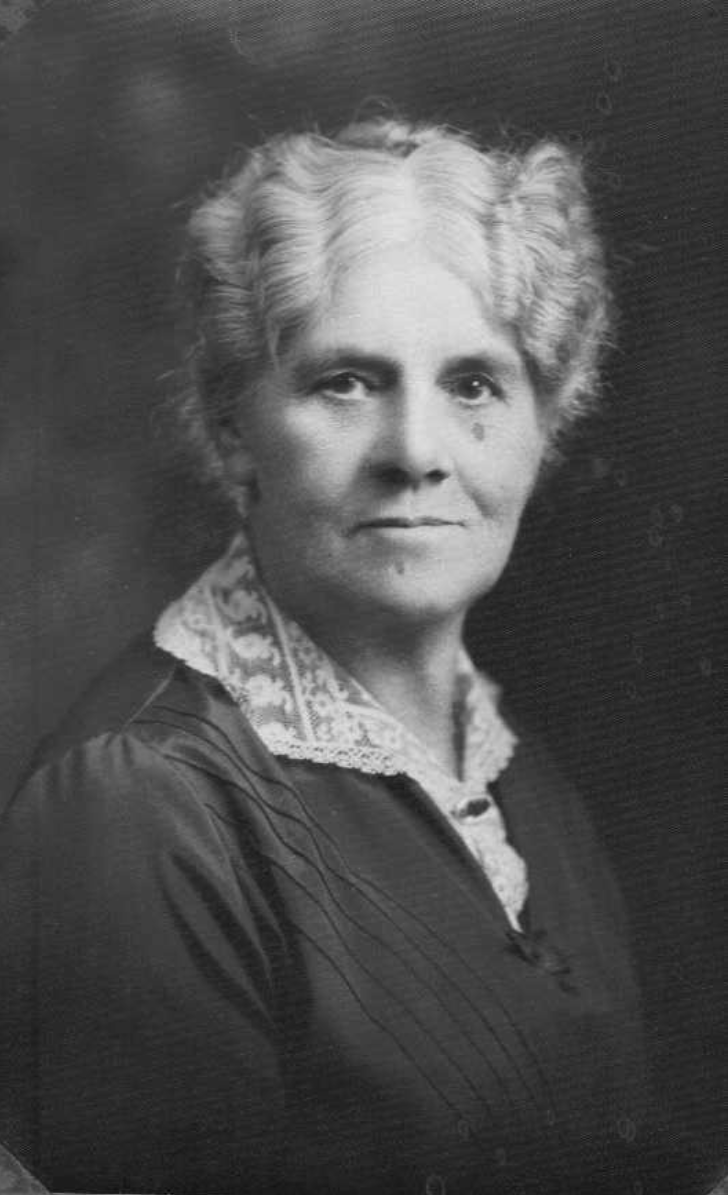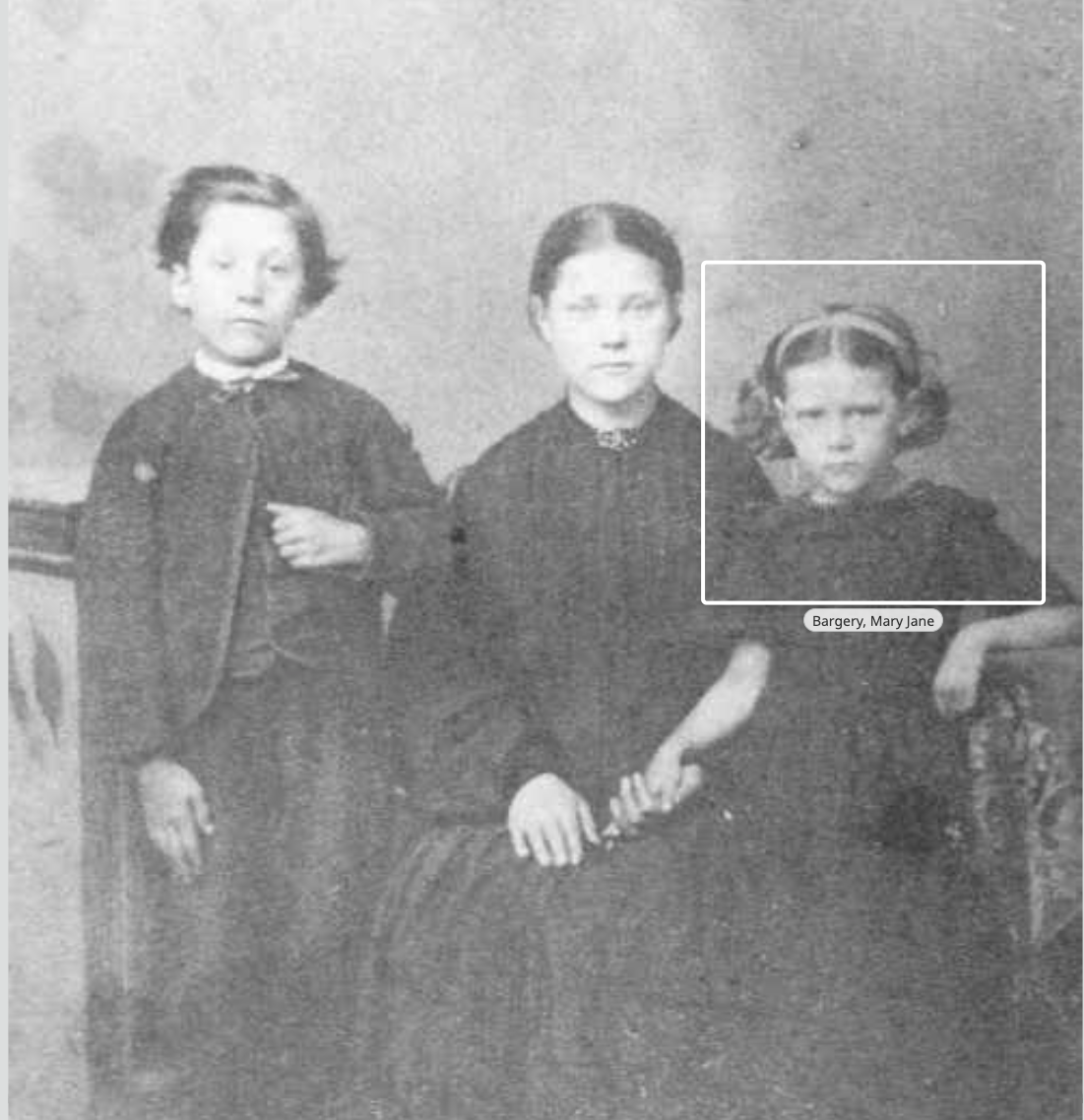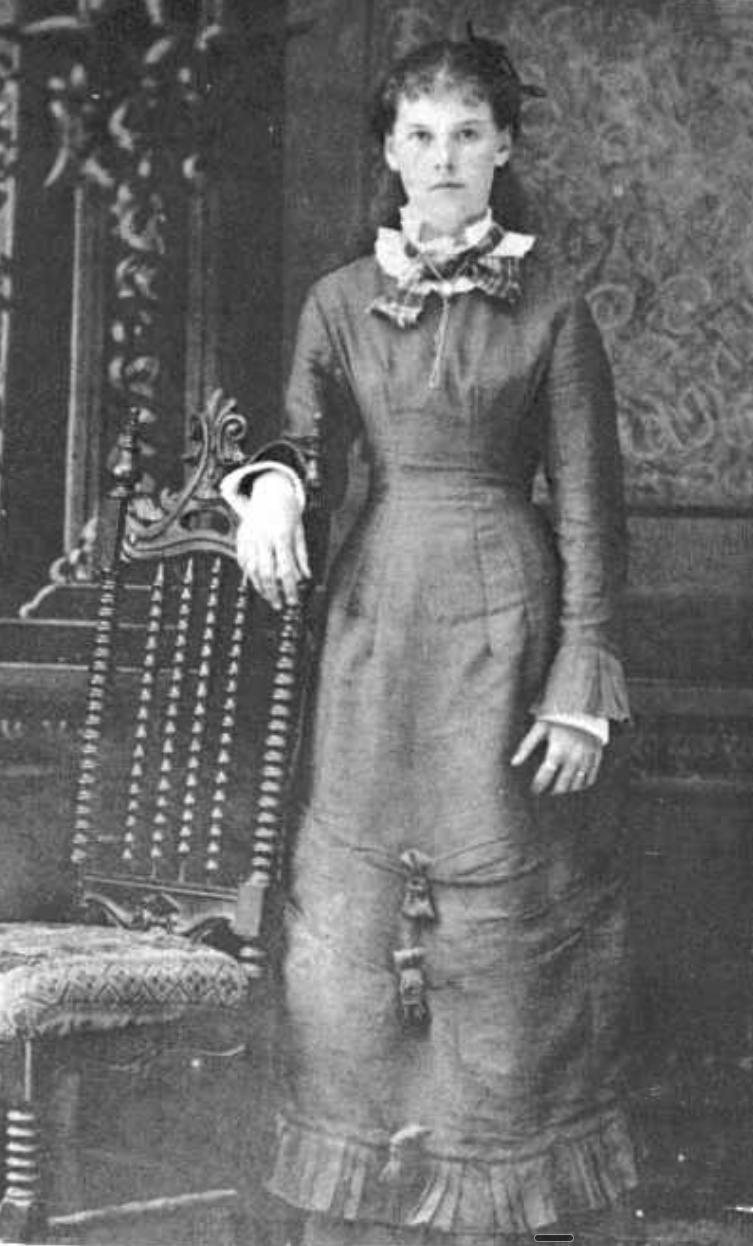
Mary Jane Bargery (1862–1948)
This document represents hours of work, use of research by lots of family members and historians, transcriptions by unamed masses and some really well placed ai prompts to help get it all organized. Staring an o3 Deep Research prompt uncovering a lot of interesting insights and new resources
Early Life in England (1862–1868)
Mary Jane Bargery was born on October 20, 1862 in Crewkerne, Somerset, England (Mary Jane Bargery | Church History Biographical Database) (Nancy-Mcgaw-1 - User Trees - Genealogy.com). She was the youngest child of Edward Bargery and Eliza (Spurdle) Bargery, a working-class family in Victorian England. Crewkerne was a small market town in southwest England; during the 18th and 19th centuries its economy centered on textile production (sailcloth and webbing) and related cottage industries (Crewkerne - Wikipedia). In the 1860s, glove-making was a common trade in this area – Mary’s mother Eliza is recorded in the 1861 census as a “glove maker” in Crewkerne (Eliza Spurdle (1823–1909) - Ancestors Family Search). Mary’s father Edward worked as an agricultural laborer or in local trades, typical of Crewkerne’s residents, but he died in February 1862, shortly before Mary’s birth (Edward Bargery Family History Records - Ancestry®). This left Eliza a widow with three young children: Mary’s elder siblings Elizabeth (born 1854) and John Alfred (born 1857) (Mary Jane Bargery | Church History Biographical Database).
Growing up in rural Somerset, Mary Jane would have been exposed to both the hardships and close-knit support of English village life. The Bargery family likely lived modestly; a widow like Eliza may have struggled to support the family, supplementing income through handcrafts (such as glove sewing) or help from relatives. During Mary’s childhood, Victorian England was undergoing rapid change – industrialization and urbanization were transforming society. However, rural Somerset retained old rhythms: many still labored in agriculture or cottage industries, and communities were bound by church, family, and local tradition. It was also an era of religious ferment. Nonconformist faiths and new religious movements spread among working-class Britons dissatisfied with the established church. It was in this milieu that the Church of Jesus Christ of Latter-day Saints (LDS) – popularly known as the Mormon church – found many converts. Missionaries had first arrived in England in 1837, and by 1851 there were over 30,000 LDS members in Britain organized into hundreds of local branches (mastertemplate.qxd). In the 1860s, LDS preachers continued working in the West Country, and it appears the Bargery family was among those who embraced the new faith.
Mary Jane’s mother Eliza Spurdle Bargery was likely introduced to the LDS Church in the mid-1860s. Although the exact details of their conversion are unknown, records suggest that by 1868 the Bargerys were members of the Mormon faith, preparing to gather with the Saints in America (Mary Jane Bargery | Church History Biographical Database). Many English converts at that time felt a strong pull to emigrate to “Zion” (Utah Territory), seeking economic opportunity, religious community, and a fresh start. Emigration was not easy for a single mother of three, but the family received assistance from the church’s Perpetual Emigrating Fund (PEF) – a revolving fund that helped impoverished converts afford passage. Eliza Bargery’s name appears in the PEF ledgers in 1868, listed with her children “John, Elizabeth, Mary” (mhs12.qxd), indicating that the church sponsored their voyage to Utah that year. Mary Jane was just five years old when her family made the momentous decision to leave their English home and travel to a new world.

Conversion and Migration (1868)
In early 1868, Mary Jane’s family began their journey from England to Utah. They likely traveled from Crewkerne to the port of Liverpool, the gathering place for European Latter-day Saint emigrants. Liverpool’s docks teemed with LDS converts that spring; it was the final departure point after years of hope and preparation. On June 4, 1868, Mary Jane Bargery (age 5) boarded the ship John Bright with her mother Eliza (42) and siblings Elizabeth (11) and John (10) (Mary Bargery | Saints by Sea). They joined a company of 722 Latter-day Saint passengers under the presidency of Elder James McGaw for the voyage (A Compilation of General Voyage Notes | Saints by Sea). Most of these emigrants were British, with a contingent of Scandinavians, and “were in fine spirits, full of joy at being on their way to Zion, an event for which they had long labored, and hoped, and prayed” (A Compilation of General Voyage Notes | Saints by Sea). As the John Bright left Liverpool, the Saints gathered on deck to sing hymns – including “Come, Come Ye Saints” – and listened to counsel from mission president Franklin D. Richards to remain orderly, united, and faithful during the journey (A Compilation of General Voyage Notes | Saints by Sea). The ship set sail in fair weather, carrying the Bargerys and hundreds of others westward across the Atlantic (A Compilation of General Voyage Notes | Saints by Sea).
Mary Jane’s Voyage to America – as a young child – would later become a foundational pioneer memory. The John Bright was a sailing packet ship, so the emigrants spent about six weeks at sea. We have no personal diary from the Bargerys, but accounts from other passengers describe a typical emigrant crossing: cramped steerage quarters, sea sickness for many, routine cleaning and cooking chores, and daily prayers and songs that kept morale high. Luckily, the John Bright had a relatively “pleasant, prosperous passage” (A Compilation of General Voyage Notes | Saints by Sea) with no major disasters reported. Mary’s company arrived at the port of New York on July 14, 1868 (A Compilation of General Voyage Notes | Saints by Sea). The long ocean voyage was over, but an equally long overland trek still lay ahead.
Overland Journey: By 1868, crossing the North American continent was becoming faster thanks to the transcontinental railroad (then under construction), but it was not yet complete. The Mormon emigrants traveled in an organized manner from New York toward Utah:
-
Rail Travel – From New York, the Bargery family took trains westward as far as the rail lines extended. They traveled with their LDS company by rail through cities like Chicago or Omaha. The Union Pacific Railroad’s line ended in Laramie, Wyoming in 1868. Records show that Mary Jane’s emigrant company arrived at Laramie (then called “Laramie City”) by July 23, 1868 (A Compilation of General Voyage Notes | Saints by Sea). This was 573 miles west of Omaha, and the end-of-track for the year. The family had crossed the bulk of the continent swiftly by train, something the pioneers just a few years earlier couldn’t imagine.
-
Wagon Trek – From the rail terminus in Wyoming, the final leg to Utah was completed by wagon. For the last time in 1868, the LDS Church sent wagon teams east to pick up the emigrants and carry them to Salt Lake (A Compilation of General Voyage Notes | Saints by Sea). Eliza and the children likely joined one of these wagon companies (the specific company is unconfirmed (Mary Ann Case | Church History Biographical Database)). They traveled across the plains and over the Rocky Mountains during the late summer. Little Mary Jane would have bounced along in an ox-drawn wagon, gazing out at the vast prairies and dusty trails. The journey was arduous – about 400 miles from Laramie to Salt Lake – and would take several weeks. Emigrant companies typically faced summer heat, thunderstorms, and the mundane challenges of camp life. They also relied on cooperation: the stronger helped the weak, sharing tasks like cooking over campfires and tending to oxen. The Bargery family made the trek in the company of other British converts (including the Case and Spurdle families who had traveled with them from England) (Mary Ann Case | Church History Biographical Database). By early September 1868, they arrived in Utah Territory, reaching the Salt Lake Valley that they had dreamed of (Mary Ann Case | Church History Biographical Database).
Mary Jane’s arrival in Salt Lake City at age 5 made her one of the young Mormon pioneers of 1868. The completion of the transcontinental railroad the next year (1869) would soon end the era of wagon train emigration, so the Bargerys were part of the last major wave of LDS pioneers who crossed the plains the “old-fashioned” way (Utah History Encyclopedia). In fact, 1868 was a peak year of British Mormon immigration, prompted by Church leaders’ call to gather before the railroad (and gentile influence) arrived (Utah History Encyclopedia). By that year, more than 31,000 British converts had emigrated to Utah since the 1840s (Utah History Encyclopedia). The Bargery family’s journey – by ship, rail, and wagon – exemplified the dedicated faith of these converts. They sacrificed their home and comfort to join their religious community in a distant frontier. Little Mary Jane likely had only faint memories of England; her new life in America was about to begin in earnest.
Pioneer Life in Utah: Settlement and Challenges
After a trek of over 5,000 miles, Mary Jane Bargery arrived in Utah with her family in 1868. They likely settled first in Salt Lake City, the center of the LDS gathering. Church records show the family in Utah by March 1869, when an LDS ordinance was performed for them (Mary Jane Bargery | Church History Biographical Database). As recent immigrants with limited means, the Bargerys probably relied on the established Saints for help initially. Salt Lake City by 1868 was over 20 years old and had grown into a thriving community, but it still retained a frontier character. The city was laid out with wide streets and irrigation ditches, adobe and brick homes, and the unfinished Salt Lake Temple rising at its center. Dozens of LDS wards (congregations) formed the social framework of the city. Mary Jane’s family would have been taken in by fellow church members and assisted through the Perpetual Emigrating Fund debt repayment program. (PEF emigrants were expected to repay their travel loans over time so others could benefit; lists of indebted emigrants like Eliza Bargery were circulated in the community (mhs12.qxd).)
For Mary Jane, Utah was a land of new sights and experiences. Accustomed to the green hills of Somerset, she now found herself in the arid Great Basin, with sagebrush deserts and towering Wasatch Mountains. The adjustment for the family was not easy. They had to build a life essentially from scratch. Eliza, her mother, likely continued to use her sewing and domestic skills to support the family – perhaps taking in sewing, baking, or other work in the LDS community. The children would have helped with chores: gathering firewood, tending a vegetable garden, or minding younger children in the close communal lifestyle of early Utah. As a child, Mary Jane would also have started to attend the local Ward School or Sunday School, learning basic reading and scripture, often using the Bible and the Book of Mormon as textbooks. These early years in Utah were a time of assimilation for the Bargery children: they picked up American accents and idioms from playmates, and they learned the self-sufficient habits of pioneer life.
One significant trial the family faced early on was the loss of Mary Jane’s eldest sister, Elizabeth. Elizabeth Bargery, who had been about 13 when they crossed the plains, died in 1873 at around age 18 (likely in Salt Lake City) (Elizabeth Bargery (1854–1873) • FamilySearch). We do not know the cause – it could have been an illness such as tuberculosis or an accident – but her passing would have been a heavy blow to the small family. Mary Jane, still a girl of ten or eleven, saw her mother and brother mourn the loss of a beloved sibling. Such tragedies were not uncommon; frontier life in the 19th century was hazardous, and medical care was rudimentary. Despite sorrow and setbacks, the Bargery family carried on, sustained by their faith and the support of the Mormon community.
By her early teens, Mary Jane had grown into a young woman in Territorial Utah. She was part of a generation of British-born Latter-day Saints coming of age in a new land. She undoubtedly took part in the wholesome activities encouraged by the Church: she would have attended Sunday meetings in their ward, participated in programs like the Retrenchment Society for young women (the forerunner of the LDS Young Women’s Mutual Improvement Association founded in the 1870s), and perhaps learned domestic arts from older women in the ward. Education for girls in Utah at that time emphasized homemaking skills, piety, and some basic academics. Mary likely learned to card wool, sew quilts, churn butter, and other tasks essential to running a household. As the only daughter after her sister’s death, a lot of responsibility fell on her shoulders to help her mother. Her brother John Alfred Bargery, by then a teenager, might have worked as a farm hand or apprentice to provide income. (John Alfred later married and remained in Utah; he lived until 1912 (John Alfred Bargery (1857–1912) • FamilySearch).)
One important aspect of Mary Jane’s pioneer experience was living in a community that was predominantly made up of converts like her family. In fact, the 1870 census showed that nearly one-quarter of Utah’s population had been born in the British Isles (Utah History Encyclopedia). Surrounded by many English accents and customs transplanted to Utah, the Bargerys likely found a sense of familiarity amid the exotic new environment. British foods, songs, and even cricket matches were present in early Utah alongside American frontier elements. Mary Jane grew up at a crossroads of cultures: British by birth, but forged by the American pioneer experience.

Marriage and Family Life on the Frontier
In the late 1870s, Mary Jane Bargery stepped into adult life. On July 13, 1878, at the young age of 15 (nearly 16), she married Rodchell Gill in Salt Lake City (Nancy-Mcgaw-1 - User Trees - Genealogy.com). Rodchell (sometimes spelled “Rochel” or “Rodchell”) Gill was about ten years her senior. He came from a firmly rooted Latter-day Saint family: his parents, Richard Gill and Mercy Tolton, were English converts who had emigrated in 1853 with the Moses Clawson pioneer company (Mercy Tolton | Church History Biographical Database) (Richard Gill | Church History Biographical Database). Rodchell himself was born around 1853, likely in Utah Territory (his older sister had been born in Illinois just before the family crossed the plains (Mercy Tolton | Church History Biographical Database)). By the time he met Mary Jane, Rodchell was a young man working as a farmer and stockma